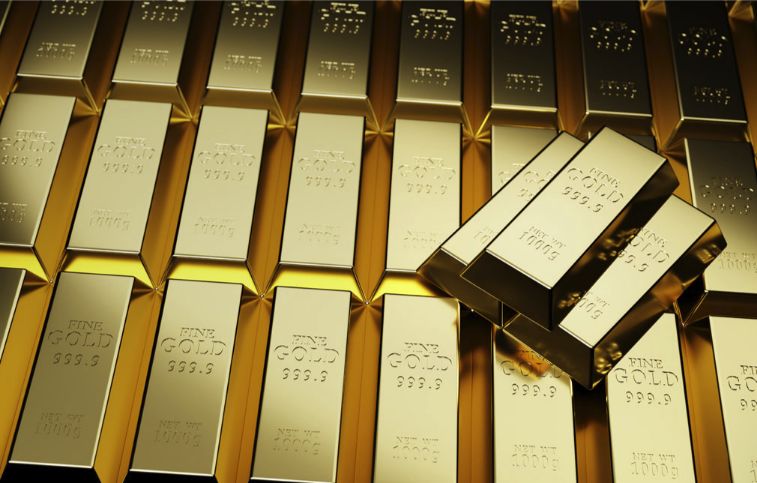- Introduction
- What Are Mining Stocks?
- How To Invest In Mining Stocks
- How to Value Mining Stocks
- Are Mining Stocks Growth Or Value Stocks?
- Do Mining Companies Pay Dividends?
- Factors That Affect The Mining Sector
- Risk vs. Reward
- Why Invest In Mining Stocks
- Risks Associated In The Investment Of Mining Stocks
- Are Mining Stocks An Ideal Investment For You?
- Final Remarks
Introduction
Mining stocks are a perfect investment when there’s an uptrend in the metal or coal industry. Many people overlook these stocks because they think it’s not possible to invest in raw materials. But that’s not the case at all. In this guide, you’ll learn everything you need to know about mining stocks and how to invest in them.
What Are Mining Stocks?
Mining stocks are businesses that look for, extract, and use natural resources like uranium, coal, copper, molybdenum, silver, and gold. Mining companies develop and operate mines that produce metals, minerals, and other raw materials that are critical for many industries. These industries include energy, construction, and manufacturing.
Some miners focus on precious metals such as gold and silver, while others focus on industrial metals such as iron ore, copper, gemstones, and coal. However, some large miners work on multiple projects that produce various minerals.
After studying the fundamentals of a particular raw material, the best way to gain leverage is through companies that produce the raw material themselves. The world may phase out some resources such as coal, but other mined resources will remain critical in supporting the global economic transition to renewable energy sources.
For example, lithium is a critical component in electric vehicle batteries. Furthermore, since copper is such a great conductor of electricity, it is an essential component in most solar and wind energy systems.
How To Invest In Mining Stocks
Even though mining is time- and energy-intensive, companies continue expanding their reach because people worldwide want what they offer. Global reliance on mined materials makes the mining industry one of the most influential and viable investment categories.
Before you decide to invest in the sector, it is important to know that there are two types of mining stocks: majors and juniors.
Major Miners are corporations with an extensive record in the industry. They have global operations, but their cash flow is slow and steady. Major mining companies are no different from large oil companies, and many of the same metrics apply. The main difference is that mining companies calculate profit and cost on a given deposit by the ton rather than the barrel.
Junior Miners are quite different from major miners. They typically have less capital, a shorter history in the industry, and higher expectations for massive returns in the future. Junior companies are smaller or relatively new and are developing or seeking to develop a natural resource deposit.
There are usually three possible outcomes for junior stocks:
- The most common scenario is a failure, which results in a significant loss for the investors.
- The second fate occurs when a junior mining company is successful, they can justify paying a reasonable premium to acquire it, resulting in good returns for the investors.
- In the third and most unusual outcome, a junior discovers a large mineral deposit in high demand. This is a magical combination of finding a significant mineral deposit at the right time. When this happens, juniors can offer a higher return on investments in a matter of days than a major company will in several years.
Major mining companies can give you regular returns and dividends, while junior mining companies can grow quickly. Therefore, investors should conduct thorough research on the mining company of interest and the materials it extracts to determine the potential benefits and risks associated.
How to Value Mining Stocks
Even though juniors and major stocks are very different, they all have one thing in common: their business model is based on using all the assets in their mining reserves.
Feasibility studies are used to assess such reserves. This type of study looks at the estimated deposit size, grade, and costs of extracting the minerals. Extracting the minerals is only feasible if the mineral deposit is worth more on the market than it costs to extract.
However, most mining companies only know how much is in a given deposit once it’s all dug up. As a result, the value of a mining stock usually follows the market value of its known reserves, with a premium paid to companies with a long history of successfully bringing those reserves to the market.
Are Mining Stocks Growth Or Value Stocks?
Mining stocks can be classified as either growth or value stocks. Junior mining stocks are considered growth stocks because they must discover a specific item in the ground, mine it, refine it, and sell it. These are riskier stocks, but the potential reward is substantial. On the other hand, major mining stocks are often seen as value stocks because they are well-established in the industry.
Do Mining Companies Pay Dividends?
Although some mining companies pay dividends, it is vital to note that not all of them do. Typically, dividends are paid by established mining companies, whereas junior companies do not pay dividends since they reinvest their earnings to fund future growth.
Factors That Affect The Mining Sector
In a mine, poor management can lead to production issues, inadequate financing can lead to mine closure, and valuation compared to similar companies can change the value of the investment.
The location of a mine can affect a mining company’s profitability because the political environment of the country where the mine is located can affect mining processes and material prices. Some governments have a history of nationalizing their local resources, which keeps private investors out of the sector.
Furthermore, the risks of investing in mining stocks are heightened during difficult times. For this reason, it’s important to choose a company that operates in a location where the government doesn’t interfere much. You should also remember to put only part of your money into one company, no matter how tempting it may be. Diversification reduces the risk of losing money on a single investment.
Risk vs. Reward
When a mining company has plenty of deposits staked or mined, the contents of any single deposit are unlikely to impact the stock price significantly. However, a change in the market value of a mineral that accounts for a large proportion of a deposit may have a bigger impact on the stock price than the creation of a new deposit or the failure of an existing deposit.
The outcomes of feasibility studies determine whether a junior mining stock will prosper or fail. A junior mining stock usually gets the most attention in the days before and after a feasibility study. If the study results are positive, the company’s value could increase, but the opposite outcome is also possible.
A junior miner may also abandon a viable deposit or sell it to a more prominent miner and move on to the next. In this sense, junior mining stocks serve as an exploration pipeline that eventually feeds the major miners. According to this viewpoint, significant risks and rewards are mainly concentrated at the junior mining level.
Why Invest In Mining Stocks
Mining is a key part of the global economy because it is one of the oldest industries in the world and has helped to advance civilizations. Almost every other industry depends on miners for their raw materials.
For example, steel is used in construction and manufacturing, aluminum is used to make airplanes, and copper is used in renewable energy systems such as wind turbines and solar panels.
Investing in mining stocks has plenty of advantages, which include the following:
- Mining stocks can help diversify your portfolio; for instance, companies that mine gold are regarded as ‘defensive’ investments. These stocks or assets tend to hold their value even during a recession.
- Gold miners’ share prices rise when most other assets fall because gold is regarded as one of the safest defensive assets available. This means owning these shares can help mitigate losses in your portfolio during a correction in the stock market.
- As the world’s population grows, so does the demand for other minerals. For instance, the value of Palladium has risen to fourth place in recent years due to its scarcity. Therefore, it is safe to predict that the value of these stocks will continue to grow, generating higher profits for investors.
- The mining industry is one of the oldest in the world and has established well-defined trends that are easier to predict than other industries. This allows the mining companies to forecast the potential profits of an area before they start the extraction process. Therefore, investors can use that information to determine which mining stocks to consider.
- Mining is solely based on extracting non-renewable natural resources, and almost every industry relies on natural resources. Even though we are moving toward green technology, we will still need to extract natural resources. Mining stocks will continue to be in demand as long as gold, steel, oil, and gas remain valuable.
Risks Associated In The Investment Of Mining Stocks
Mining stocks can be risky. Many junior mining companies, particularly those in the development or exploration stages, should be considered high-risk since they are speculative investments.
The mining industry is complex and difficult to understand. Mining companies often issue detailed business updates, which may include information on the quality and size of mineral deposits. These updates are useful information, but they often require a deeper understanding of geology to understand what they mean.
Mining companies are known to cause environmental harm during their extraction and refining activities. For example, iron ore conversion contributes significantly to global carbon emissions, not to mention the amount produced by the combustion of fossil fuels such as coal.
Retail investors often don’t have access to the types of company reports that institutional investors pay for, which can cost up to $100,000. Retail investors are disadvantaged because regulators restrict research firms and brokers from sharing that information.
Fortunately, Resources Recap is changing this scenario by providing unbiased and reliable information tailored specifically for retail investors, bridging the gap between institutions and individual investors.
The mining industry is vulnerable to changes in the global economy due to the nature of its business. A slowing economy or a recession can significantly impact demand for base metals such as copper, iron ore, and aluminum. As a result, commodity prices can fall, reducing mining companies’ profitability and stock prices.
Mining companies are also at risk from governments because they regulate the industry to ensure that it does not harm the environment or nearby communities. These regulations can sometimes be too much for mining companies, making it hard for them to work and make money.
Since governments regulate the industry, investors should consider where companies operate and whether the mines are located in politically stable areas.
Are Mining Stocks An Ideal Investment For You?
Whether mining stocks are right for you depends on your investment goals, risk tolerance, and attitude toward climate change. It’s also important to remember that mining is a dynamic industry, with many mining stocks offering entirely different risk and return profiles.
As a prospective mining investor, you’re probably wondering whether to invest in junior or major mining stocks, but the answer depends on your search criteria. In the right market, juniors can provide a substantial amount of appreciation. Alternatively, major mining stocks may be a good choice if you want a low-risk stock with the prospect of dividends and decent appreciation.
Final Remarks
The global market for mining stocks has grown significantly in the last decade due to the increased demand for natural resources. With this article, we hope that we have provided you with enough information to determine whether mining stocks can become a valuable addition to your investment portfolio.
Want to learn more about mining stocks? Head over to our profiles section where we discuss all the major mining companies in depth. Alternatively, you can also visit the news section to keep yourself updated with all the latest developments in the mining industry.












